-
 Bitcoin
Bitcoin $106,731.2224
-1.05% -
 Ethereum
Ethereum $2,444.9804
-1.20% -
 Tether USDt
Tether USDt $1.0003
0.01% -
 XRP
XRP $2.1882
0.09% -
 BNB
BNB $651.1435
-0.61% -
 Solana
Solana $148.3252
-2.09% -
 USDC
USDC $1.0000
0.01% -
 TRON
TRON $0.2787
0.55% -
 Dogecoin
Dogecoin $0.1598
-3.16% -
 Cardano
Cardano $0.5520
-2.43% -
 Hyperliquid
Hyperliquid $39.0960
-2.64% -
 Bitcoin Cash
Bitcoin Cash $516.9519
2.98% -
 Sui
Sui $2.7011
-2.95% -
 Chainlink
Chainlink $13.0582
-1.71% -
 UNUS SED LEO
UNUS SED LEO $8.9250
-2.53% -
 Stellar
Stellar $0.2359
-0.18% -
 Avalanche
Avalanche $17.3856
-3.73% -
 Toncoin
Toncoin $2.8095
-3.56% -
 Shiba Inu
Shiba Inu $0.0...01121
-1.95% -
 Litecoin
Litecoin $85.2795
-0.85% -
 Hedera
Hedera $0.1471
-2.15% -
 Monero
Monero $319.8004
1.12% -
 Dai
Dai $1.0001
0.01% -
 Ethena USDe
Ethena USDe $1.0001
0.02% -
 Bitget Token
Bitget Token $4.5344
-1.07% -
 Polkadot
Polkadot $3.3224
-2.96% -
 Uniswap
Uniswap $6.9697
-2.75% -
 Aave
Aave $266.1658
-2.25% -
 Pepe
Pepe $0.0...09414
-3.41% -
 Pi
Pi $0.4913
-3.29%
Should we stop loss if the weekly KD high-level dead cross + the daily big Yin line breaks?
A weekly KD high-level dead cross combined with a daily big Yin line signals strong bearish momentum, prompting traders to reassess long positions and consider tightening stop losses.
Jul 01, 2025 at 09:49 pm
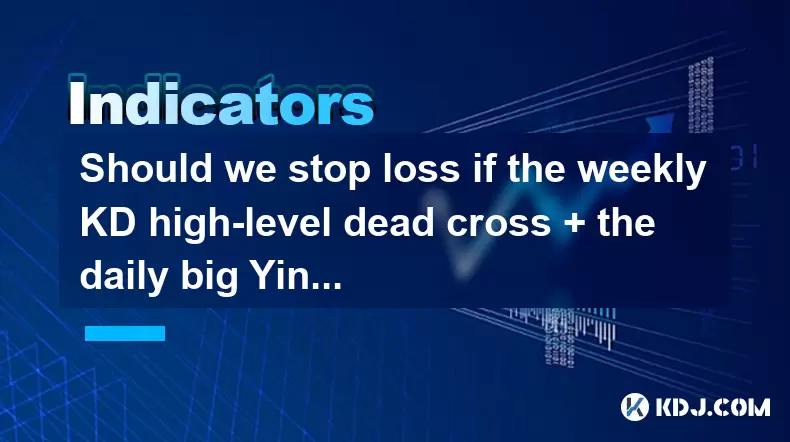
Understanding the Weekly KD High-Level Dead Cross
In technical analysis, KD (K-D indicator) is a momentum oscillator that helps traders identify overbought or oversold conditions in the market. The weekly KD high-level dead cross occurs when both the K-line and D-line are above 80 (indicating overbought territory), and the K-line crosses below the D-line. This pattern often signals a potential reversal from an uptrend to a downtrend.
In cryptocurrency trading, especially for assets like Bitcoin or Ethereum, this kind of signal can be critical. When it appears on the weekly chart, it suggests a longer-term shift in sentiment. Traders should pay attention to whether the crossover occurs after a significant rally, as it may indicate exhaustion in buying pressure.
The Significance of a Daily Big Yin Line Break
A "big Yin line" refers to a large bearish candlestick on the daily chart. In Japanese candlestick terminology, "Yin" represents a red or bearish candle. A big Yin line indicates strong selling pressure over a single day and can serve as a confirmation of a trend reversal.
When such a candle appears after a weekly KD high-level dead cross, it reinforces the bearish outlook. This combination can be particularly impactful in crypto markets, where volatility is high and sentiment shifts rapidly. The appearance of a big Yin line following a KD crossover may prompt experienced traders to reassess their positions.
Why These Signals Matter in Crypto Trading
Cryptocurrency markets operate 24/7 and are highly sensitive to technical patterns due to algorithmic trading and speculative behavior. The confluence of weekly and daily indicators increases the reliability of trade signals. While no indicator guarantees outcomes, combining timeframes can help filter out false signals.
For instance, if the weekly KD shows a dead cross but the daily candle remains bullish, it might not be enough to trigger a stop loss. However, once a large bearish candle appears on the daily chart, it confirms short-term weakness, which could align with a broader reversal indicated by the weekly chart.
Steps to Evaluate Whether to Stop Loss
- Review the weekly chart to confirm the KD values. Check if the K and D lines are above 80 and have crossed downward.
- Analyze the daily chart for candlestick patterns. Look for a large bearish candle that breaks key support levels or previous lows.
- Check volume during the big Yin line formation. Higher-than-average volume supports the validity of the bearish move.
- Assess your entry price and current stop-loss level. Determine whether the risk-reward ratio still makes sense given the new information.
- Decide whether to tighten or maintain your stop loss based on the combined strength of these signals.
Common Mistakes Traders Make in This Scenario
One common error is reacting too quickly to a single indicator without confirming with other timeframes. For example, some traders might panic-sell upon seeing a weekly KD dead cross without checking the daily candlestick action. On the flip side, others may ignore the big Yin line because they focus only on long-term charts.
Another mistake involves placing stop losses too close to the current price without considering the overall market structure. This can lead to premature exits before the full impact of the signal unfolds. It's also important to avoid emotional decision-making, especially in fast-moving crypto markets where volatility can trigger stop losses unnecessarily.
How to Apply This Strategy in Real Trading Scenarios
Let’s assume you’re holding a long position in Ethereum and notice a weekly KD high-level dead cross. You check the daily chart and see a large red candle forming with heavy volume. At this point, you might want to evaluate your risk exposure.
You can start by reviewing your original trade plan. If your strategy was based on a bullish continuation pattern and the recent developments contradict that setup, it may be prudent to adjust your stop-loss level closer to the current price or exit partially.
Alternatively, if you're a swing trader, you might use this opportunity to hedge your position or take profits off the table. It's crucial to document each decision and review its effectiveness later, which will improve your ability to handle similar situations in the future.
Frequently Asked Questions
Q: Can I rely solely on the weekly KD crossover without checking the daily candlesticks?
No, relying solely on one indicator or timeframe can lead to inaccurate decisions. Combining multiple signals across different timeframes improves the robustness of your analysis.
Q: What if the big Yin line appears but volume is low?
Low volume during a bearish candle suggests weak conviction among sellers. In such cases, the signal may lack strength, and traders should wait for further confirmation before acting.
Q: How far should I place my stop loss if I decide to hold the position?
Your stop loss should ideally be placed beyond a meaningful support level or recent swing low. This allows room for normal price fluctuations while protecting against significant downside.
Q: Is this approach applicable to all cryptocurrencies?
While the principles apply broadly, not all altcoins exhibit the same liquidity or chart reliability as major ones like Bitcoin or Ethereum. Lower-cap tokens may show more erratic behavior, so caution is advised.
Disclaimer:info@kdj.com
The information provided is not trading advice. kdj.com does not assume any responsibility for any investments made based on the information provided in this article. Cryptocurrencies are highly volatile and it is highly recommended that you invest with caution after thorough research!
If you believe that the content used on this website infringes your copyright, please contact us immediately (info@kdj.com) and we will delete it promptly.
- Powell, Stablecoin Regulation, and Circle's Bold Move: A New York Minute on Crypto's Future
- 2025-07-02 02:30:12
- Ethereum Price, Tom Lee, and Bitcoin: A New Era for Crypto?
- 2025-07-02 02:30:12
- Hoskinson, Ripple, Cardano DeFi: A New Era of Collaboration?
- 2025-07-02 02:35:12
- BlockDAG, ALGO, and the Crypto Trends Shaping 2025
- 2025-07-02 01:50:12
- Cold Wallet, Token, Gains: Is CWT the Smartest Crypto Move?
- 2025-07-02 01:10:12
- Pi Coin's Rocky Ride: Support Levels, Recovery Timeline, and What the Experts Are Saying
- 2025-07-02 01:10:12
Related knowledge
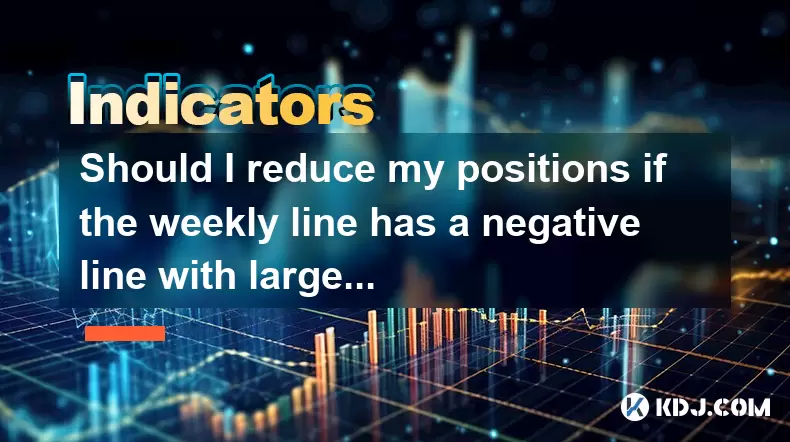
Should I reduce my positions if the weekly line has a negative line with large volume + the daily line falls below the middle Bollinger line?
Jul 01,2025 at 10:50pm
Understanding the Weekly Line with Negative Candle and Large VolumeWhen analyzing cryptocurrency charts, a weekly line that forms a negative candle accompanied by large volume is often interpreted as a strong bearish signal. This pattern suggests that institutional or large traders are actively selling their positions, which can foreshadow further price...
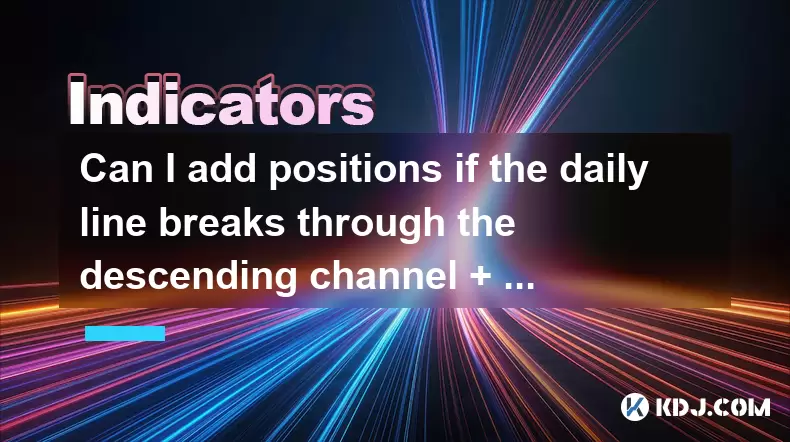
Can I add positions if the daily line breaks through the descending channel + the 30-minute moving average is in a bullish arrangement?
Jun 30,2025 at 11:00pm
Understanding the Descending Channel BreakoutWhen a daily line breaks through a descending channel, it indicates a potential shift in market sentiment from bearish to bullish. A descending channel is formed by drawing two parallel trendlines, where the upper trendline connects the lower highs and the lower trendline connects the lower lows. A breakout o...
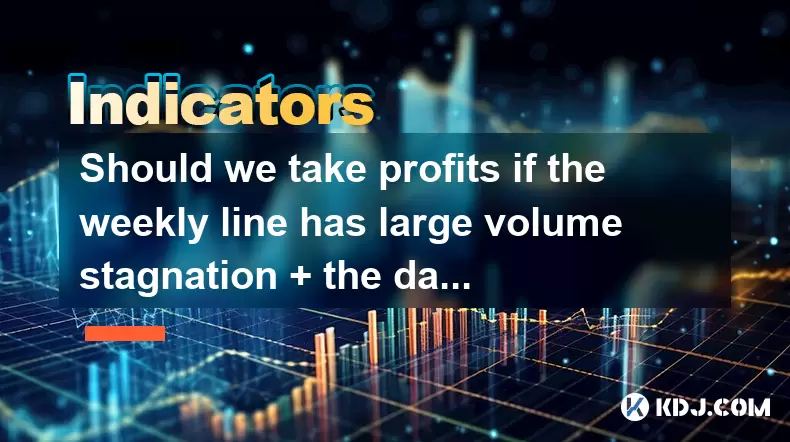
Should we take profits if the weekly line has large volume stagnation + the daily RSI top divergence?
Jul 01,2025 at 05:22pm
Understanding Weekly Volume Stagnation in Cryptocurrency TradingIn cryptocurrency trading, weekly volume stagnation refers to a situation where the total trading volume over a week remains relatively flat or shows no significant increase despite price movements. This phenomenon can indicate that institutional or large traders are not actively participat...
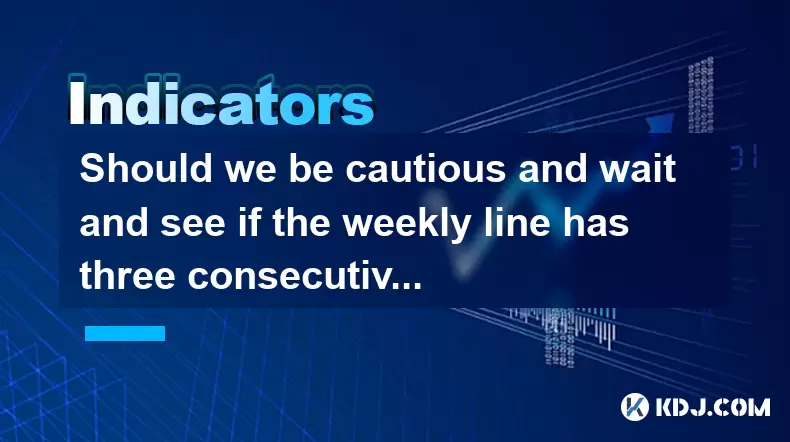
Should we be cautious and wait and see if the weekly line has three consecutive Yin lines + the daily MACD green column enlarges?
Jul 01,2025 at 12:42am
Understanding the Weekly Three Consecutive Yin Lines PatternIn technical analysis, three consecutive Yin lines on a weekly chart indicate a strong bearish trend. Each Yin line represents a week where the closing price is lower than the opening price, signaling consistent selling pressure. When this pattern appears three times in succession, it often sug...

Should we stop loss if the weekly KD high-level dead cross + the daily big Yin line breaks?
Jul 01,2025 at 09:49pm
Understanding the Weekly KD High-Level Dead CrossIn technical analysis, KD (K-D indicator) is a momentum oscillator that helps traders identify overbought or oversold conditions in the market. The weekly KD high-level dead cross occurs when both the K-line and D-line are above 80 (indicating overbought territory), and the K-line crosses below the D-line...
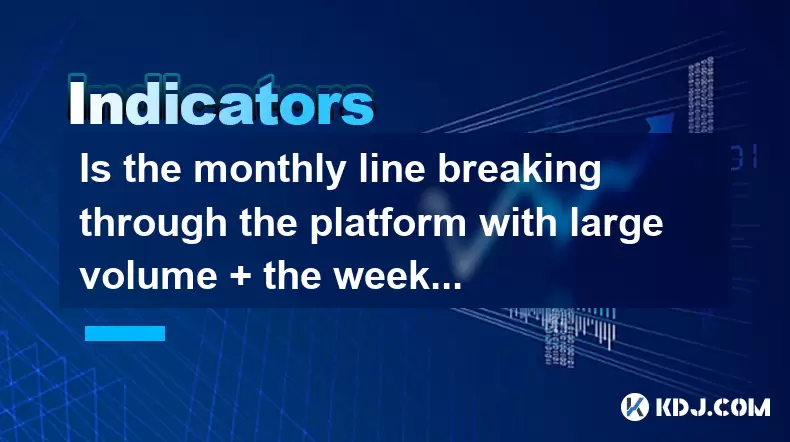
Is the monthly line breaking through the platform with large volume + the weekly moving average converging and then diverging and bullish?
Jul 01,2025 at 05:01pm
Understanding Monthly Line Breakouts in CryptocurrencyIn the world of cryptocurrency trading, monthly line breakouts are significant events that can indicate long-term trends. When a cryptocurrency's price breaks above a key platform or consolidation zone on the monthly chart, especially with large volume, it often signals strong institutional or whale ...

Should I reduce my positions if the weekly line has a negative line with large volume + the daily line falls below the middle Bollinger line?
Jul 01,2025 at 10:50pm
Understanding the Weekly Line with Negative Candle and Large VolumeWhen analyzing cryptocurrency charts, a weekly line that forms a negative candle accompanied by large volume is often interpreted as a strong bearish signal. This pattern suggests that institutional or large traders are actively selling their positions, which can foreshadow further price...

Can I add positions if the daily line breaks through the descending channel + the 30-minute moving average is in a bullish arrangement?
Jun 30,2025 at 11:00pm
Understanding the Descending Channel BreakoutWhen a daily line breaks through a descending channel, it indicates a potential shift in market sentiment from bearish to bullish. A descending channel is formed by drawing two parallel trendlines, where the upper trendline connects the lower highs and the lower trendline connects the lower lows. A breakout o...

Should we take profits if the weekly line has large volume stagnation + the daily RSI top divergence?
Jul 01,2025 at 05:22pm
Understanding Weekly Volume Stagnation in Cryptocurrency TradingIn cryptocurrency trading, weekly volume stagnation refers to a situation where the total trading volume over a week remains relatively flat or shows no significant increase despite price movements. This phenomenon can indicate that institutional or large traders are not actively participat...

Should we be cautious and wait and see if the weekly line has three consecutive Yin lines + the daily MACD green column enlarges?
Jul 01,2025 at 12:42am
Understanding the Weekly Three Consecutive Yin Lines PatternIn technical analysis, three consecutive Yin lines on a weekly chart indicate a strong bearish trend. Each Yin line represents a week where the closing price is lower than the opening price, signaling consistent selling pressure. When this pattern appears three times in succession, it often sug...

Should we stop loss if the weekly KD high-level dead cross + the daily big Yin line breaks?
Jul 01,2025 at 09:49pm
Understanding the Weekly KD High-Level Dead CrossIn technical analysis, KD (K-D indicator) is a momentum oscillator that helps traders identify overbought or oversold conditions in the market. The weekly KD high-level dead cross occurs when both the K-line and D-line are above 80 (indicating overbought territory), and the K-line crosses below the D-line...

Is the monthly line breaking through the platform with large volume + the weekly moving average converging and then diverging and bullish?
Jul 01,2025 at 05:01pm
Understanding Monthly Line Breakouts in CryptocurrencyIn the world of cryptocurrency trading, monthly line breakouts are significant events that can indicate long-term trends. When a cryptocurrency's price breaks above a key platform or consolidation zone on the monthly chart, especially with large volume, it often signals strong institutional or whale ...
See all articles

























































































